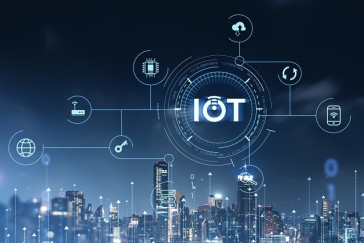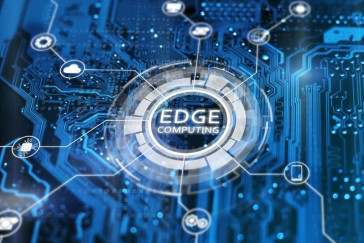Get The Best 5G Network Expansion News And Latest Updates

The need for quicker and more secure internet has reached unprecedented levels in light of the constant globalization. The introduction of 5G technology signifies that mobile network technologies have dramatically changed, with promises of faster-than-ever speeds, ultralow latencies, and a myriad of connected devices. For end users, however, the 5 G evolution is more than just enjoying faster downloads and improved voice and data services. It is expected to be disruptive across sectors, improve technological capacities, and facilitate the creation of new and more creative solutions.
5G Network Expansion
The transition from 4G to 5G is more than just another step in the process of network improvement. It opens up new possibilities in the world of communication, allowing almost instant voice and data transmission over large distances, making possible technologies such as self-driving cars, virtual reality, smart cities, etc. Unlike the earlier generations of mobile networks that sought to keep people on the internet, 5G is designed to connect anything and everything, from cars, home appliances, and manufacturing equipment to medical systems.
The expansion of the 5G network is taking place at an international level, with telecommunication companies engaging in an infrastructure build-out race. The real potential of 5G is not in its improvement over 4G or even 3G, but in the multitude of connected devices and applications, it will support beyond mobile communication. This expansion is based on a complex infrastructure featuring small cells, fiber optics, several frequency bands, edge computing, and network slicing.
Latest 5G Network Expansion News
Mid-band and C-band Expansion
One of the most exciting developments in the 5G ecosystem is the mid-band and C-band region terrain expansion. In the United States, for example, Verizon, AT&T, and T-Mobile have been launching mid-band 5G through their affiliate companies, which balances its high speed and more area coverage than the narrow high-band spectrum. Furthermore, the C-band auctions in the United States have given additional bandwidth to telecom companies for their operations, increasing their speed and efficiency for consumers.
Standalone (SA) 5G Networks
The shift from non-standalone (NSA) 5G, which relies on 4G infrastructure, to standalone (SA) 5G has accelerated. Standalone 5G allows full use of 5G's capabilities, including ultra-reliable low-latency communication (URLLC) and massive machine-type communication (MTC). As more networks transition to SA 5G, consumers will begin to experience the full benefits of the technology, from seamless video streaming to enhanced smart home systems and industrial applications.
Private 5G Networks
Businesses have been interested in building private 5G networks. They are not limited to consumers only. Different companies use private 5G networks in varied sectors such as manufacturing, healthcare, and logistics to power smart factories and machines while analyzing data in motion. In doing so, they can improve processes and make the most of the connectivity due to its speed and reliability.
Global Expansion
Whereas, for example, America, South Korea, and China are the most developed in the 5G network rollout, other regions are fast coming up. In particular, in India, 5G networks were inaugurated in the last three months of the year but at least two leading telecom operators, Reliance Jio and Bharti Airtel, will launch commercial services in the whole country by next year. Within the European Union, Brussels has put in place a supplementary package of funding to speed up the rollout of the 5G infrastructure so that all the metropolises and, most importantly, transportation corridors will be filled with 5G by 2030.
5G in the Country
One of the access of the 5G network is the promotion and the appropriation of equal rights concerning the quality of the service provided, which is why high-speed internet connectivity is being rolled out to the outmost and remote areas. It is within the scope of governmental policies and those of telecom providers that the emergence of 5G networks is not only confined to cities. In that sense, in the U.S. they have programs such as the Rural Digital Opportunity Fund (RDOF) which seek to provide broadband and 5G to the deserts and in every far corner. Similar projects are being done in Europe and many other countries as well.
Components of 5G Digital Infrastructure
Small Cells
Small cells, which are low-power base stations that operate on a smaller scale than traditional cell towers that cover extensive areas, are today aimed at providing coverage to small geographic areas, extending only a few meters to a few kilometers. This is important in 5G because the high-frequency millimeter waves responsible for the highest 5G speeds do not travel far and can easily penetrate objects such as buildings and trees. In this case, small cells allow telecom companies to maintain consistent 5G connectivity even in areas with a large population density and to increase the data transfer rate.
Fiber Optics
The architecture of 5G systems is based on fiber-optic cabling. These cables transport information at unreasonable speeds and are also essential in meeting 5G's data-carrying capacity requirements. Though 5G systems are designed to provide last-mile wireless connections to users, end-user traffic still needs to travel through fixed fiber optics network connections. The development of 5G will also, somewhat inevitably, lead to the increased necessity for the widespread rollout of fiber to facilitate fast traffic carriage between the network nodes.
Spectrum

5G systems are multidimensional and use several frequency bands to offer various services. The low-band spectrum can provide extensive coverage. However, the transmission speeds are considerably low, making it more suitable for rural regions. The mid-band coverage spectrum is often a compromise between speed and coverage and is used in most cases in the suburbs. The proper management and allocation of spectrum resources is paramount in enhancing the service delivery of 5G networks.
Edge Computing
One of the most transformative aspects of 5G is its ability to enable edge computing. This means data is processed closer to where it is generated - at the so-called network 'edge' - instead of being transmitted to a central data facility. By bringing the real power of computing nearer and nearer to the users or their devices, the 5G technology can enhance indoor applications and even allow real-time activities such as auto driving, playing virtual reality games, or performing surgical operations from a distance. Moreover, edge computing minimizes the volume of data that has to be transmitted to far distances, enhancing the overall network's operation.
Network Slicing
Another advance of a 5G system is network slicing support. This technique allows multiple virtual networks to be created on top of a physical network infrastructure. The advantage of this is that these different applications can be catered for, for instance, while enhancing mobile broadband (eMBB), ultra-reliable low latency communication (URLCC) or machine-type communication (MTC). For example, a slice dedicated to a smart manufacturing unit may be designed with low latency and high-reliability parameters. A slice for a mobile broadband application may be created emphasizing speed and bandwidth.
Benefits of 5G Mobile Connectivity
Ultra-Fast Speeds
One of the most talked-about features of 5G is its blazing-fast speeds. With download speeds up to 100 times faster than 4G, 5G allows users to download movies, apps, and software updates in seconds. This speed boost is also crucial for industries that require large data transfers, such as healthcare (for medical imaging) and media (for high-definition video production).
Lower Latency
5G drastically reduces latency or the time data travels from one point to another. In 4G networks, latency is typically around 30 to 50 milliseconds, but with 5G, it can be as low as 1 millisecond. Near-instantaneous communication is essential for real-time applications like online gaming, virtual reality, and autonomous vehicles. This means smoother experiences for consumers, from video calls to augmented reality (AR) apps.
Massive Device Connectivity
5G can support many connected devices, making it the ideal Internet of Things (IoT) network. This is particularly important for smart cities, where sensors, cameras, and other devices must constantly be connected to monitor traffic, manage energy consumption, and improve public safety. 5G will enable more connected homes for consumers, with everything from appliances to security systems integrated into a seamless, smart ecosystem.
Improved Network Reliability
5G networks are designed to be more reliable than their predecessors, crucial for mission-critical applications such as healthcare, public safety, and autonomous transportation. For consumers, this translates to fewer dropped calls, more consistent internet connectivity, and improved performance, even in crowded areas like stadiums and concerts.
Enabling New Technologies
5 G's most exciting aspect is its potential to unlock new technologies and experiences that were impossible with previous generations of mobile networks. From immersive virtual reality experiences to smart cities and autonomous vehicles, 5G will be the foundation for the next wave of technological innovation.
Conclusion
Expanding 5G networks is one of our time's most transformative technological advancements. With faster speeds, lower latency, and the ability to connect billions of devices, 5G has the potential to revolutionize industries and improve consumers' lives in countless ways. However, the journey to widespread 5G adoption has challenges, from high infrastructure costs to security and regulatory concerns. As telecom companies expand their 5G networks, consumers can look forward to a future where the next generation of mobile connectivity powers everything from smart homes to autonomous vehicles.
This content was created by AI





